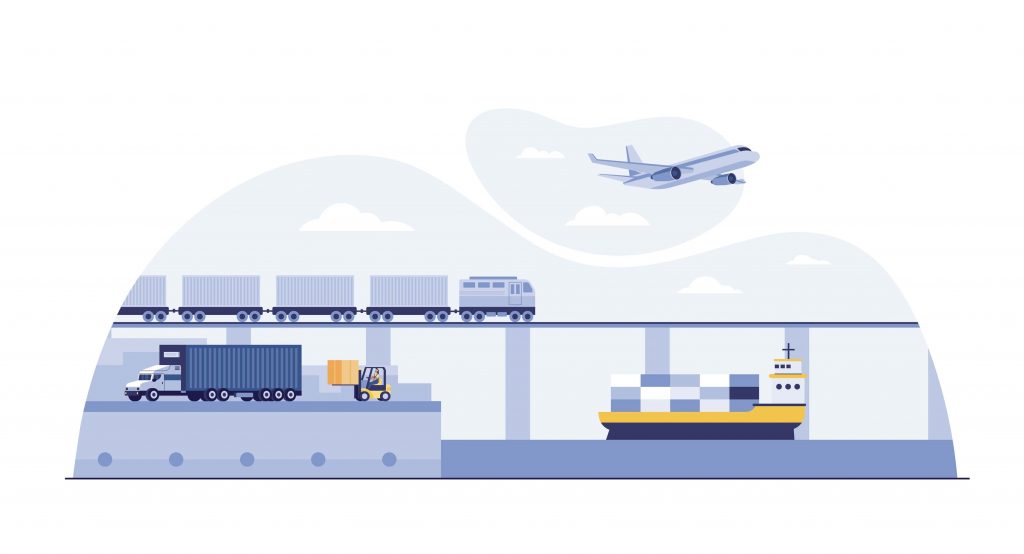
Global Shipping Challenges 2023
Posted on May 16 2023

The global freight industry has faced a number of shipping challenges over the past few years and this trend is set to continue throughout 2023.
The lasting impacts of the pandemic, ongoing geopolitical conflict, a challenging economic climate and rising fuel costs, along with an increasing focus on sustainability are just some of the issues facing the shipping industry.
Sea Freight
High sea freight rates continued throughout early 2022 but began to decline during the second half of the year. This was due to plummeting demand causing carriers to have excess vessel capacity.
This trend is expected to continue throughout 2023, with January seeing the largest decrease in sea freight rates since the pandemic. The issue of excess capacity is set to worsen as new vessels enter the market causing capacity to increase by 8% globally. This will likely lead to an increase in blank sailing programmes, where a ship skips one or more of the scheduled ports on its route, reducing the reliability of sea freight.
Congestion at major international ports has significantly reduced in recent months. Reports suggest that port waiting times will return to pre-pandemic levels over the course of 2023 due to reduced cargo demand.
Mandated by the IMO (International Maritime Organisation), 2023 will be the first year ships are required to report on emissions. In 2024, this data will be used to give ships emission ratings, with carriers required to retire or make improvements to poorly performing vessels. The IMO’s overall goal is to reduce carbon emissions by 40% by 2030.
To meet these targets, shipping carriers have begun investing in dual fuel vessels that use more sustainable sources of energy. This investment is likely to be reflected in the cost of sea freight, with prices predicted to rise over the next few years.
Air Freight
Industry experts suggest that there will be increased air cargo capacity in 2023 with the recovery of belly space on passenger flights. This increased capacity could lead to a drop in air freight rates. However, increased fuel and labour prices will likely prevent rates from dropping to pre-pandemic levels with prices expected to remain 35% higher than in 2019.
A significant volume of air cargo is expected to be diverted to sea freight due to improved schedule reliability. During the pandemic, there was a significant increase in demand for air freight as shippers sought ways to combat the unreliability of ocean freight cause by congestion, blank sailings and equipment shortage. As these issues are resolved, shippers are shifting back to sea freight to save costs and reduce their environmental impact.
The development of SAF (Sustainable Aviation Fuel), a form of fuel that reduces carbon emissions by 80%, provides a massive opportunity for air freight to become more environmentally competitive in the future.
Road Freight
The road freight industry proved to be volatile in the UK and Europe throughout 2021/22 and this trend is set to continue in 2023. Rising fuel costs, driver shortages, the economic climate, increased demand and the war in Ukraine are just some of the ongoing issues negatively impacting the industry.
There are currently more than 425,000 vacant HGV driver positions across Europe, along with a 46% increase in demand. These external factors will likely cause continued delays and keep road freight prices at an inflated rate for the foreseeable.
Find out more about the ongoing HGV driver shortage.
The switch to Customs Declaration Service (CDS)
From 30th November 2023, CDS will be the UK’s single customs platform and all businesses will need to declare goods through the service rather than the CHIEF (Customs Handling Import and Export Freight) system. This transition represents the biggest adjustment for the shipping industry since Brexit and will likely create challenges when it comes to accurate record keeping.
Find out more about the switch to CDS.
Summary
In summary, there are a number of shipping challenges facing the industry in 2023. However, there are some exciting developments when it comes to improving the sustainability of air and sea freight which are set to disrupt the industry over coming years.
The main global shipping trends in 2023 are:
- Demand for sea freight will increase significantly as reliability improves and customers place more emphasis on their environmental impact.
- Air freight capacity will increase but prices will remain around 35% higher than pre-pandemic.
- Road freight rates and delays will remain high due to a number of external factors.
- All UK customs declarations must be submitted through the new CDS system from 30th November 2023.
Find out more about our freight forwarding solutions or contact us to discuss a project.



